There are the kits with and without the heatsincs. The temps are without the top of the enclosure. I believe that some holes in the upper and bottom frame to allow some convection plus a low noise fan.
Actually I have put thick thermal pads under the SoCs so the heat transfers to the whole case.
Do you mean on the other side of the pcb?
Yes, exactly. Every bit helps there.
here you find my heat sink setup which results at 26°C CPU Temperature, running a CPU/IO stress test.
Can someone suggest single big radiator, which cover all bpi chips and fits the board (mounting holes etc). Without fan, I can’t see reason in using it with default metal case.
I ended up buying this aluminum heatsink and tapping holes. I put thermal pads on everything but the MT7531 to get the chips mostly level.
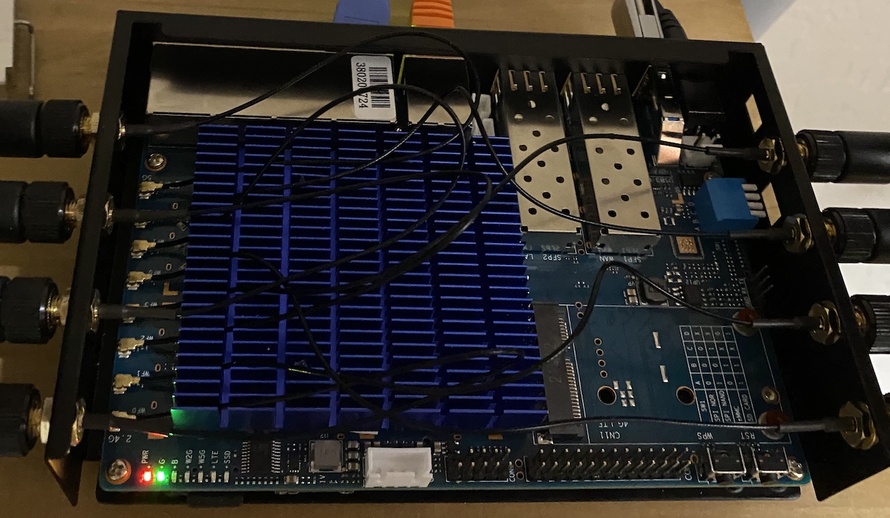
I did the 12v fan mod as well and may end up adding a fan. My closet has a relatively high ambient temperature (30ºC) and little airflow, unfortunately.
Just a question; you think this bigger single heatsink works better than the individual ones (which are included in the package “deal”)?
Also note that you should be sure about the different relative heights of the chips, you can’t use the same thermal pads on each chip.
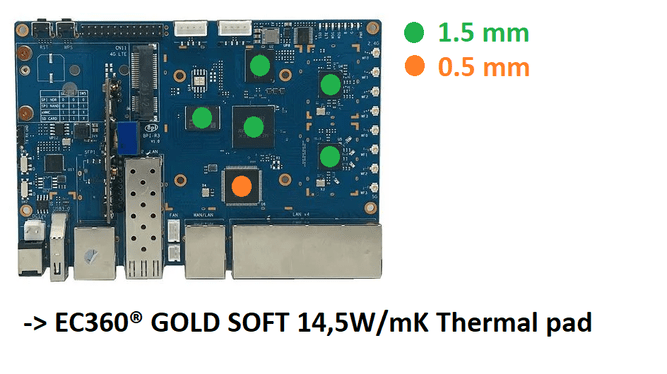
(Image originally from Michael Fischer)
There’s a bunch of considerations. Using the same sink across multiple chips spreads extra heat to cooler chips, for example. I leveled the chips with thermal pads and based on temp graphs, adequate contact seems like it’s being made.
I ended up getting a fan anyway and need to mod the fan connector down to 3-pins and the smaller pitch. I’ll drill a grate above the heat sink and possibly some vents on the left side of the case.
Look like this thread is also my concern, I’ve been experiencing periodic disconnection about every 2 days few weeks ago. still not sure if the temp is the culprit.
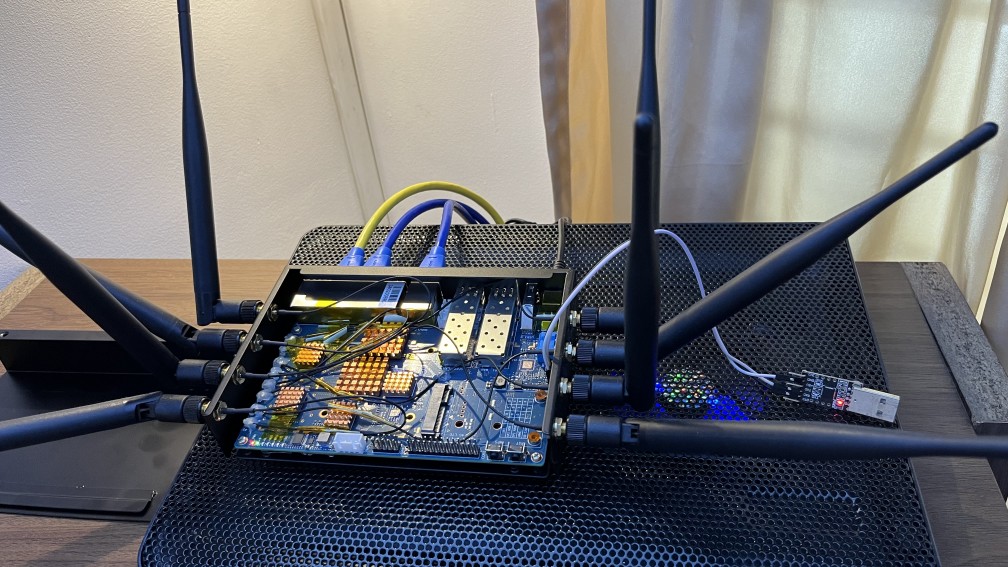
wrote a script to log the temp readout every minute for observation… case all closed with 53c, 49c, isn’t bad right?
(while true; do sleep 60; echo -e "$(date)\n$(sensor)" >> /mnt/nvme0n1p1/sensors.log || break; done) &
Wifi disconnection is handled here:
We should leave this thread temperature related (measured temp reaching high values) not for effects possible caused by higher temp
This:

Gotta check Temperature now…
This one here is with WiFI deactivated:
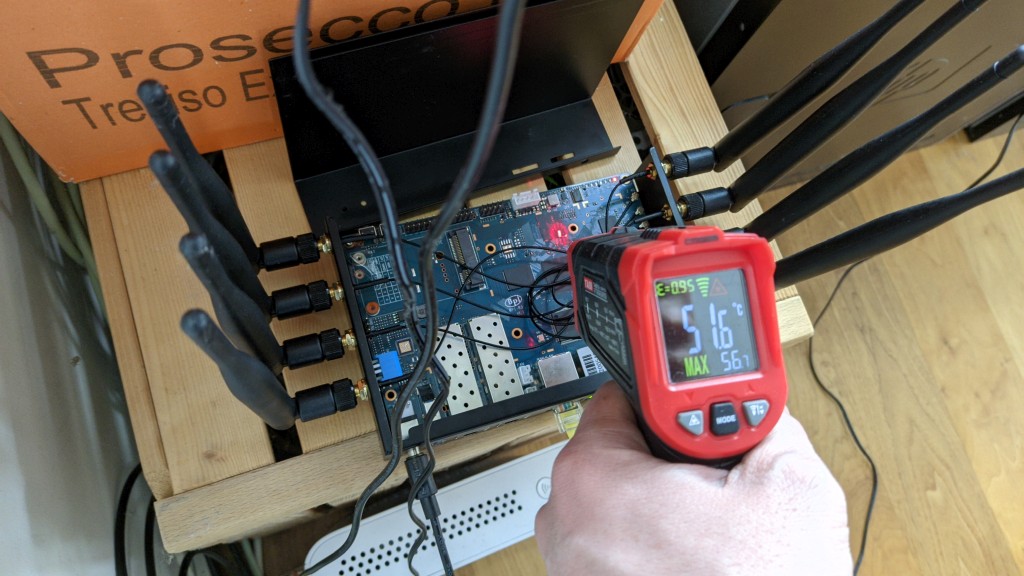

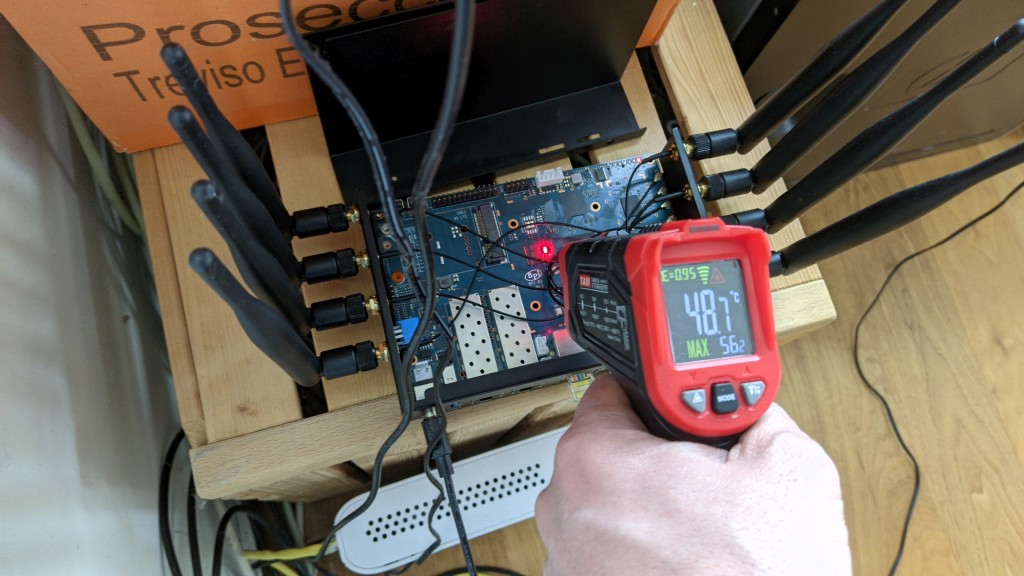

Has anyone seen any movement on getting cpufreq support for the mt7986? I have checked linux master, and vireshk’s tree (where the mediatek cpufreq pulls seem to come from) and there is nothing there. Unless the CONFIG_ARM_MEDIATEK_CPUFREQ_HW driver supports the mt7986 and nobody knew it all along.
Yes i have not seen cpufreq patches yet  maybe @moore can help here as he have done cpufreq support for mt7622
maybe @moore can help here as he have done cpufreq support for mt7622
Currently i prepare pwm/thermal patches with daniel
We’ve PMIC power IC on mt7622 board and can lower the voltage when we adjust cpu frequency (DVFS - dynamic voltage and frequency scaling). however. there is no PMIC on mt7986 board so we don’t have cpufreq driver and keep running at 2Ghz, thanks.
So there is no way for cpu-freq support on r3 due to missing hw component (pmic),right? Or is there any other way to do cpu trotteling (maybe by soc directly)?
Do you have to lower the voltage? I understand it will consume less power but is it an absolute must?
It would be very unusual for cpu-freq control to be based on PMIC voltage. Normally it would be around the other way… The SoC CPU clock speed would be decreased by adjusting the CPU PLL dividers. Then when the CPU has re-stabilised, the PMIC would be commanded to the lower voltage (to further decrease power usage).
The CPU frequency adjustment should be able to net good savings. But depending on how the frequency control is done, it might be trickier to speed up / slow down the clock dynamically (i.e. if increasing the CPU speed requires a full PLL relock, that might be 20ms of time ‘paused’ to get the faster CPU speed… which might negate the benefit of speeding up entirely).
They included 4 heatsinks with adesive to put in SoC, switch, and both wifi chips
Is this the recommended configuration? Leaving the RAM without a heaksink? Is this working well for you?
yes. woks ok. soc temps are 59ºc or less. No other chips looking warm toi the touch.